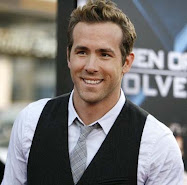By Mister Curie
Madame Curie and I listed to another excellent installment of Mormon Stories Podcast last night and it really filled in a lot of the gaps. The podcast guest was Daymon Smith, who did his Anthropology PhD at the University of Pennsylvania (where I currently attend school) on the subject of the LDS church correlation program. It was an absolutely fascinating podcast that I highly recommend. Learning real church history, not the stuff they teach at church, largely led to my disaffection. It became obvious after doing a minimal amount of research that we do not learn a lot of the real church history because it has been sanitized out of the curriculum by the correlation program. The question I have had since becoming disaffected from Mormonism is wondering how we went from the crazy 19th century church founded by Joseph Smith that was filled with charismatic gifts and alternative lifestyles (polygamy) with a definite anti-American government bend to the organized and decidedly American religion we have today. In studying church history, it seemed to me that there was a shift in things around the turn of the 20th century, right around the time that Utah was obtaining statehood and polygamy was being banned. But it was more than just banning polygamy, so that didn't explain everything. Daymon Smith researched this exact time period of the church and has some fascinating insights.
I was raised as a "Correlated Mormon" with the false world view that the church correlation program provides. The church correlation program gives the impression that the LDS church is the receptacle of eternal truths that have always been present throughout history because they come from an Eternal God. This gives the impression that modern inventions, such as the Temple Endowment, were originally instituted with Adam and Eve and have been repeated in all dispensations of the world, such that a temple endowment was performed in the Jewish tabernacle and temples (such as Solomon's temple), and that Christ gave his apostles the endowment (but evil and designing men removed reference to it from our scriptures), and that even BoM peoples had the temple endowment. Such correlation reinforces processes that Joseph Smith initiated with his translation of the Bible and the Book of Mormon. Correlation presents the image that if the Bible had been translated properly and not altered by evil men, it would largely read like the Book of Mormon with its testimonies of Christ, as if Old Testaments prophets (and you could group Lehi, Nephi, and the Brother of Jared into people from the same time period as Old Testament prophets) knew and bore testimony of Christ. Once you strip away the correlated world view, it becomes obvious that the Book of Mormon is a 19th century religious commentary that doesn't even match our own correlated doctrine. Abinidi's sermon to King Noah is not an exposition of the Godhead (where the role of the Holy Ghost wasn't cannonized until the early 20th century largely through the efforts of James E. Talmage), but rather a 19th century trinitarian exposition. The "fullness of the Gospel" with Priesthood ordination, temple endowment, and Eternal marriage are not in the Book of Mormon. In fact, the current structure of the church that we "Correlated Mormons" know and love has only been in existence since the early 1980's.
My favorite quote from the podcast is: "Through the institutionalization of what is called correlation, you can explain away every error of correlation as an error of faith, but you can credit everything that happens in the church as a result of correlation." To me, this quote explains how you can find perfectly documented historical information from church history that is simultaneously historically true and "eternally" false.
I highly recommend the podcast, you can listen to it here:
Daymon Smith
Accepting Changing and Ending Relationships
2 years ago












